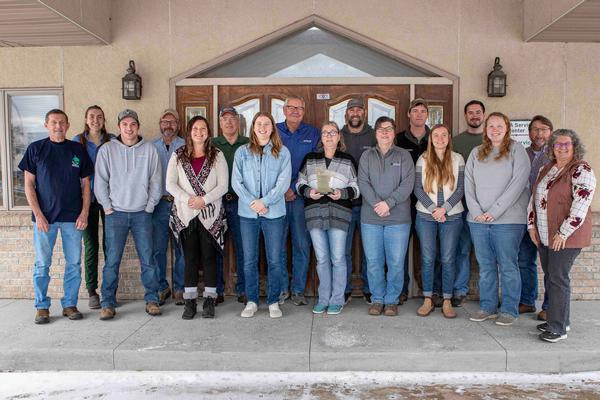East Otter Tail SWCD - Blog
Third Generation Rancher Achieves Water Quality Certification
June 26, 2025 by Alyson Levig
Elizabeth and Matt Kahlstorf have joined the rising number of producers becoming water quality certified through the Minnesota Agricultural Water Quality Certification Program (MAWQCP). This voluntary program certifies producers using conservation-minded practices to protect water quality by requiring an in-depth examination of field characteristics, crop rotation, tillage, nutrients, and pesticide management techniques, depending on the operation. For the Kahlstorfs, cattle are their primary focus. Still, they also raise meat and laying hens, hogs, and goats throughout their diversified farm, 211 Ranch LLC.
Read MoreGrazing to Promote Water Quality
January 06, 2025 by Alyson Levig
Judy and Harry Worm have joined the rising number of producers becoming water quality certified through the Minnesota Agricultural Water Quality Certification Program (MAWQCP).
Read More
East Otter Tail Soil and Water Conservation District Named SWCD of the Year
December 30, 2024 by Alyson Levig
Official press release:
The East Otter Tail Soil and Water Conservation District (SWCD) was named SWCD of the Year at the Minnesota Association of Soil and Water Conservation District’s (MASWCD) annual two-day convention held in Bloomington, Minnesota, in early December.
Brakstad Family Farm Receives Water Quality Certification
December 11, 2024 by Alyson Levig
Lance and Robyn Bragstad, proud owners of the Brakstad Family Farm, have recently become water quality certified under the Minnesota Agricultural Water Quality Certification Program (MAWQCP).
Read More
Did You Know... Pocket Forests can Help Boost the Local Ecosystem?
December 03, 2024 by Olivia Olson
When someone mentions forests, what comes to mind? You might think of large swaths of land covered with trees and other plants, perhaps older wooded ecosystems that have been around for decades or centuries. However, there is another type of forest that has gained traction over the past couple of decades, called pocket forests.
Read More